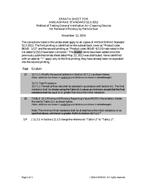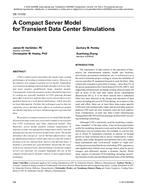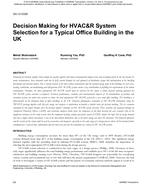An experimental study was conducted to investigate the effects of subcooling and wall superheat on both sensible and evaporative heat transfer in afalling-film heat exchanger using plain copper tubes in an inline tube arrangement. Distilled water was used as both the heating and solutionfluids. By varying the solution subcooling and tube wall superheat, it was seen that the portions of sensible and evaporative heat transfers could becontrolled. Since the falling-film heat exchanger is limited by the coupled relationship between flooding of the earlier tubes and partial-dryout of thebottommost tubes, the ability to control this evaporative-to-sensible heat transfer ratio is important in system optimization. By varying the solutionand heating fluid inlet conditions, it was shown that sensible heat transfer, which is a function of solution Reynolds number, can be promoted forthe earlier tubes while evaporation heat transfer, which is a function of solution film thickness, can be promoted for the lower tubes. Since sensibleheat transfer is enhanced by higher solution Reynolds number and therefore larger film thickness, flooding of the upper tube rows is no longerdetrimental. It was also shown that there exists optimal subcooling and wall superheat values for which the largest system-wide heat duty can beobtained.
Citation: ASHRAE Conference Papers, Denver, CO
Product Details
- Published:
- 2013
- Number of Pages:
- 8
- File Size:
- 1 file , 770 KB
- Product Code(s):
- D-DE-13-C061


